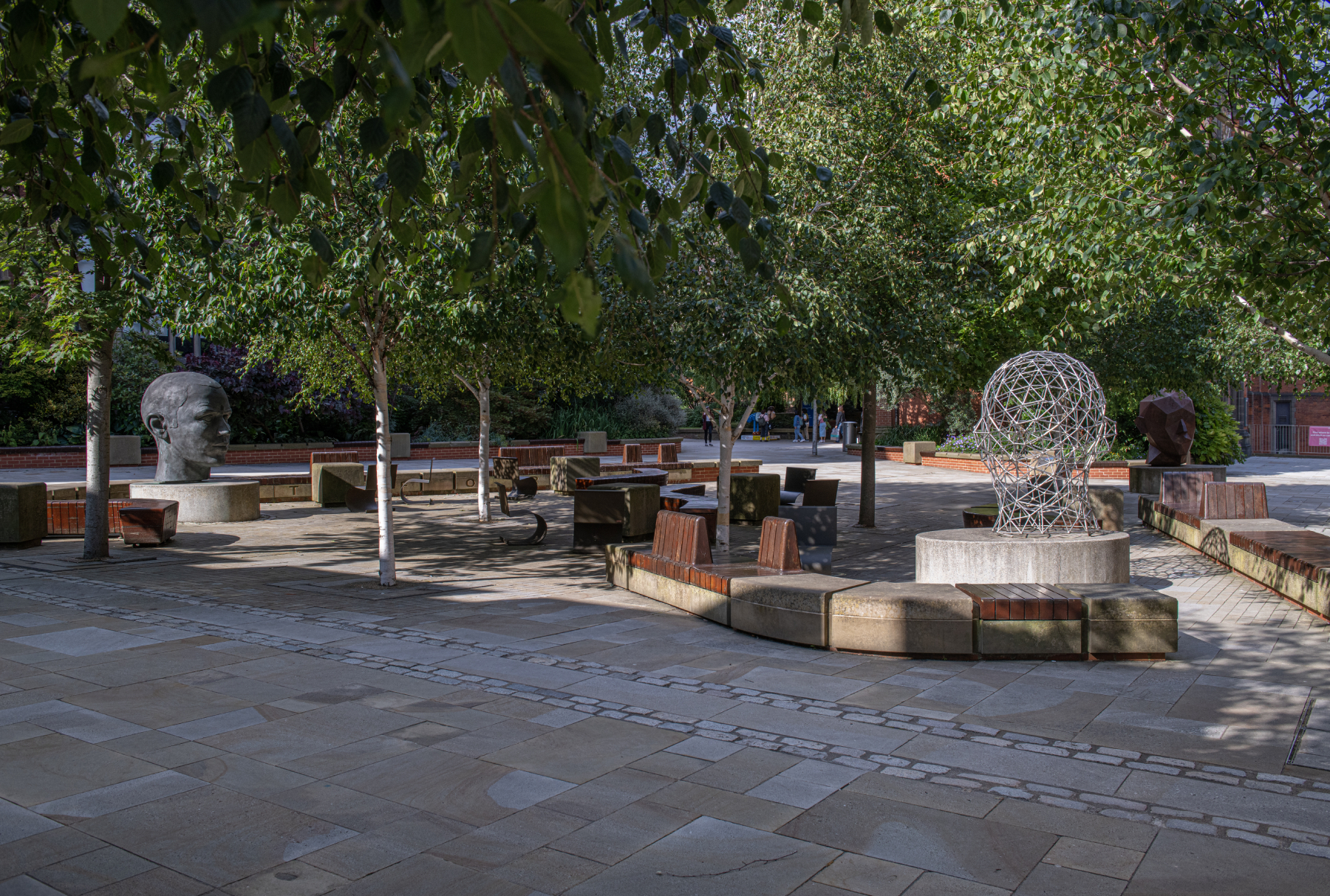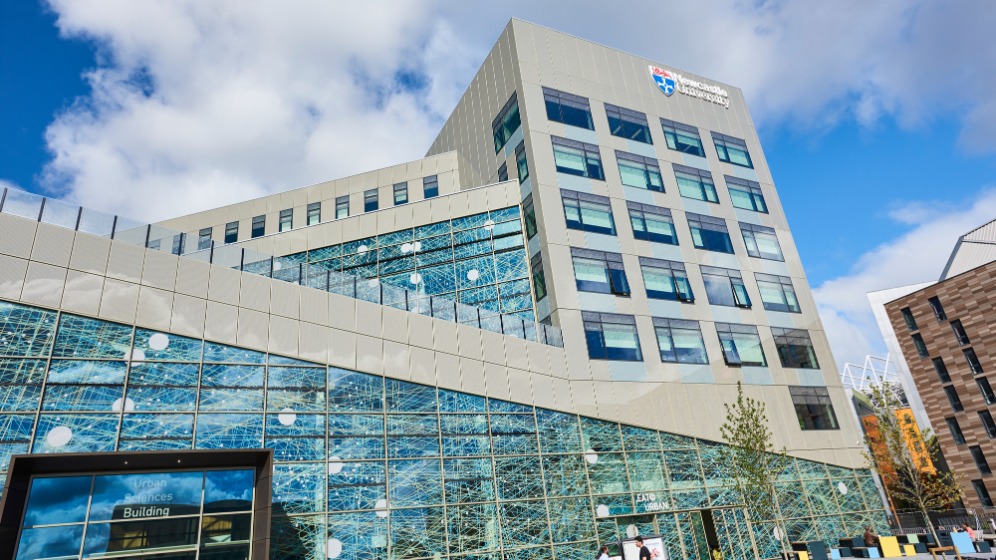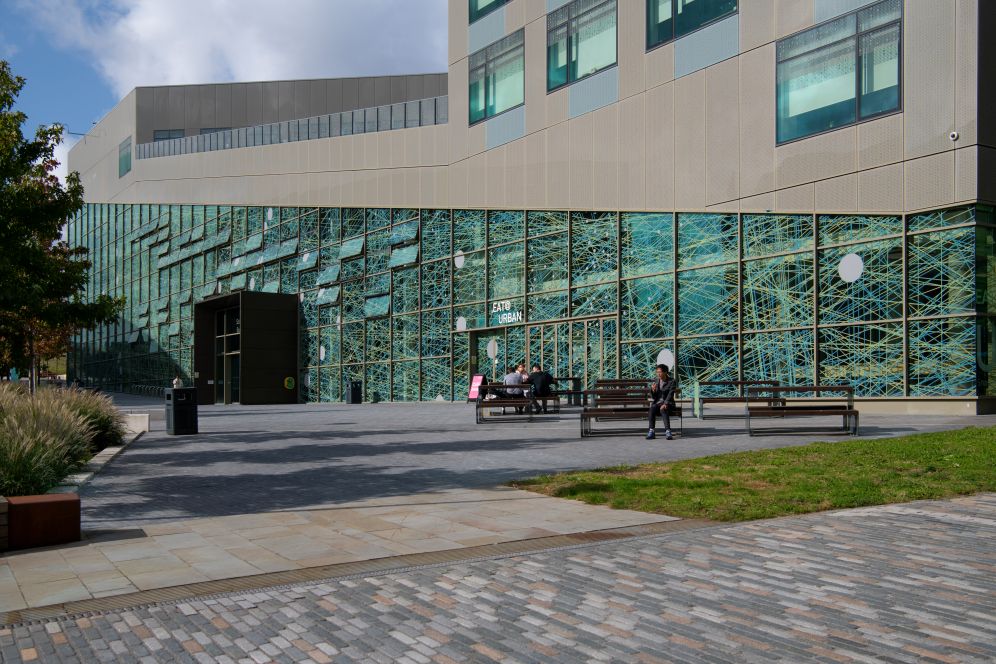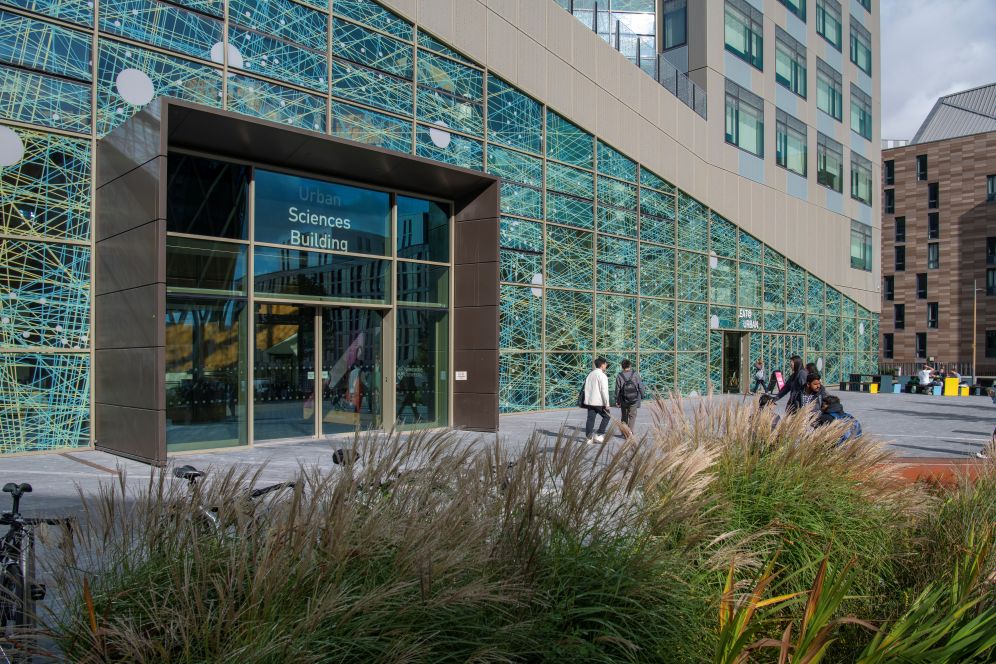Web of Connections by Martyn Dade-Robertson
The Web of Connections artwork can be found on the exterior of Newcastle University’s Urban Sciences Building. It is an astonishing ‘portrait’ of every individual link and data point that makes up the university website.
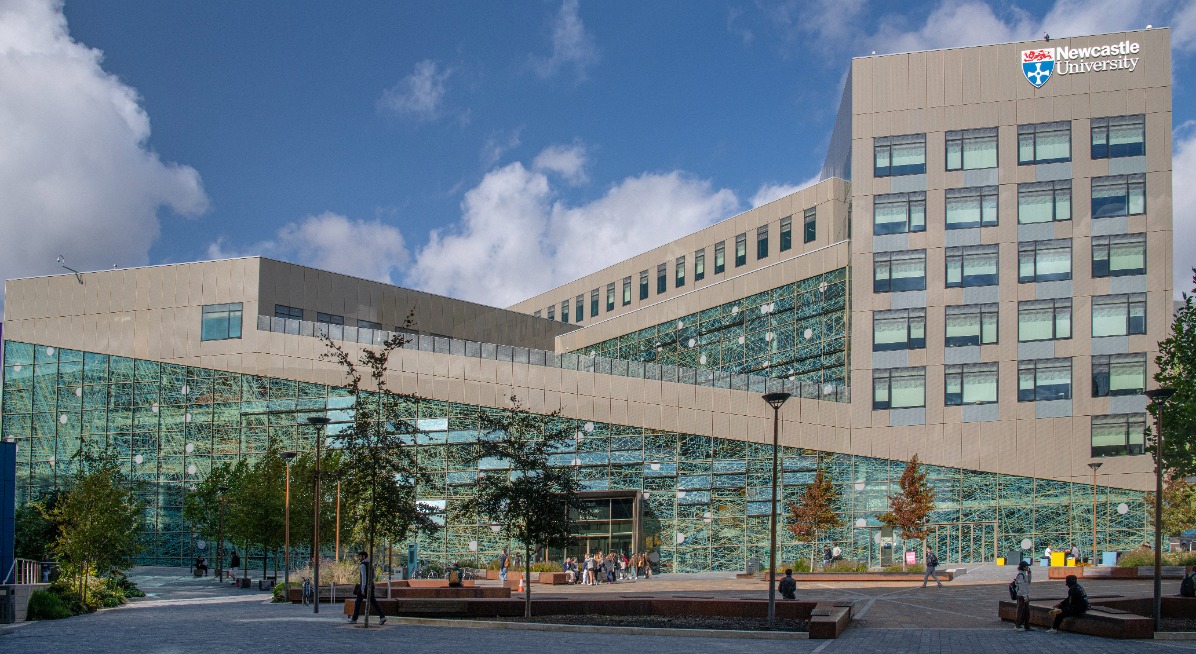
The artwork
Part of the brand-new Newcastle Helix, this unique design was created by Newcastle-based academic Dr Martyn Dade-Robertson.
A map of the university website, the design captures every link and data point a user must navigate when searching for information about the University online.
The Web of Connections art piece was derived from the results of a web crawler – similar to the type of software used by Google – that trawls a website by visiting every page in a given URL and any external links to other websites.
The design also represents the importance of collaboration in university research. The Urban Sciences Building has been designed not just as a place for research and learning, but as a research experiment itself.
Trialling new energy systems, novel materials and smart engineering, it is a key part of the Newcastle Helix vision to create a full-scale demonstration of urban innovation – a ‘living laboratory’ aiming to facilitate research into sustainability in urban areas.
Professor John Fitzgerald said “Martyn’s powerful work […] reminds us of the scale, potential and fragility of the digital world in which we work, and for which we have responsibility.”
The artist's perspective
Dr Dade-Robertson says: “We conceive of the University in bricks and mortar, but the virtual and ephemeral connections between people, places and organisations within and outside the institution are just as important. These connections represent an invisible university which is rarely seen.”
Consisting of three, overlapping layers, Dade-Robertson says the aim was to arrange the elements to give balance across the façade of the building, while also creating something geometrically distinctive.
“I didn’t want a homogeneous pattern – like a piece of wallpaper,” the designer explains. “Instead, the final effect is almost as if the building itself is cutting through an invisible data network, revealing its complexity on the façade.”
